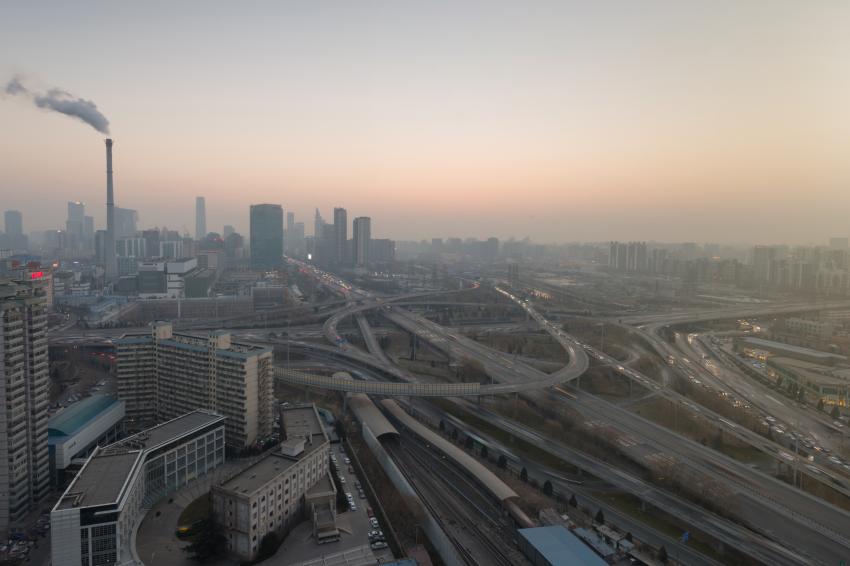China’s Anti-pollution Clampdown
Stricter Environmental Regulation Impacts Specialty Chemicals Production
Since late 2016, the Chinese government has conducted a series of environmental inspections of production companies. These inspections have typically led to short-term closures of a large share of plants. A report by the Ministry of Environment stated that 70% of all companies inspected failed to meet the standards for controlling air pollution. However, most of them were allowed to restart production after reducing their emissions.
Compared to previous government actions, these inspections are much stricter and conducted on a larger scale. They are an indication of much tighter implementation of environmental regulation at a time when the regulations themselves are also tightening. Since January 2017, a number of government agencies, including the State Council and the Ministry of Environment have issued several policies mandating reduced energy consumption, lower carbon emissions and stricter pollution control. And the government puts a strong emphasis on implementation of these new regulations. For example, in Oct. 2017, 69 Hebei government officials were dismissed for failing to implement pollution controls, and an additional 154 officials were handed over to police for investigation. Similarly, changing the previous emission fee to an emission tax has shifted authority from local governments – which frequently favor local economic activity over the environment – to central tax authorities.
Consequences for Chemical Producers
As China’s president Xi Jinping has made reduction of environmental pollution one of his three top priorities for China, these developments are not likely to be reversed, even though some Chinese experts estimate that the campaign has decreased GDP growth in 2017 by 0.2%. It is therefore worthwhile for companies with chemical production in China – and for those doing business with them – to examine their direct and indirect consequences.
First of all, the environmental inspections have led and will lead to short-term production stops. In the recent past, about 40% of all companies inspected were affected by such stops, which typically lasted 2-4 weeks. Generally, the polluting companies have to choose between upgrading their equipment to meet the environmental requirements and stopping production altogether.
Second, much longer production stops may result as a consequence of chemical companies being forced to relocate. Broadly speaking, the government wants to relocate all production of toxic chemicals into dedicated industrial parks. The timeframe depends on plant size. Small and mid-sized chemical plants (with up to about 1,000 employees and up to about €50 million of annual sales) need to start relocation in 2018 and have the relocation completed by 2020. For larger plants, relocation has to start by 2020 and be finished by the end of 2025. Of course, it will depend on the individual company whether such a production relocation will affect sales, or whether a sufficient buffer stock can be produced in advance to bridge the gap. Also, customers may not immediately be willing to buy from a new plant without first auditing the new production site, which will require an even larger buffer stock.
The number of affected companies is quite large. For example, in Shandong province alone almost 200 chemical plants have been identified for relocation, though the majority of them have not yet started the process. Often this is due to a lack of funds for relocation.
Of course, an alternative to relocating production is to stop production altogether. This is particularly likely if the producing company is small, not very profitable and uses outdated technology. In such a case, local government will only give limited or no support, and as a consequence, a marginal producer may be forced to exit the market.
Third, it will take much longer to get permissions for new plants. A big and well connected local chemical company told the author that instead of the previous 6 months, the local authorities would now take about 18 months to give such a permission, primarily as the environmental due diligence will become more important in the approval process. As a consequence, markets for individual chemicals will take more time to adapt to demand increases.
Fourth, production costs will increase. Some examples of such cost increases include
- Costs for Volatile Organic Compounds (VOC) treatment: In several industries including printing, ink production and flexible packaging, the installation of VOC treatment equipment becomes mandatory.
- Costs for water treatment: In one example known to the author, a specialty chemicals producer will have to reduce the emission of waste water by 90% after relocation, which will obviously require substantial additional investment.
- Higher costs of raw materials: Partly this is due to these raw materials being other chemicals, which will be affected by the same cost increases. However, it is also due to the restrictions on imports of materials for recycling, such as paper and plastics. For example, paper prices have already doubled within the last few months.
- Environmental tax: This tax will be higher than the current emission fees which it replaces, and implementation will be controlled by more powerful agencies.
- Higher transportation costs: According to some estimates, 80% of hazardous chemicals are being transported by road, and as measures to prevent accidents are implemented more strictly, the cost of such transportation may increase by up to 35%.
Chinese Chemical Industry Will Consolidate
In the longer term, the aspects listed above will also have an impact on the overall structure of the chemical industry – an effect that is quite appreciated by the government. Many specialty chemicals segments in China are very fragmented and suffer from overcapacity. For example, there are more than 2,000 coatings producers, and the top 200 producers account for only about 60% of total industry sales. The tightened environmental regulation will lead to industry consolidation as the weakest and smallest players will not be able to afford the necessary production upgrades. This will also lead to a reduction in overall capacity along with the improvement in technological level.
Generally, the tightened environmental regulation will help bigger and technologically more advanced players. Indeed, these companies may benefit from higher prices as excess capacity is eliminated. This is good news for foreign players in China as they tend to have both a bigger average size and better technology, particularly with regard to emission control. In addition, the stricter implementation of regulation for all types of companies – whether foreign owned or local – corrects the previous trend of tighter control of foreign-owned ventures.
In terms of chemical segments, downstream and specialty segments will be more affected as they tend to be smaller and operate on a lower technological level. In particular, smaller plastics processors, adhesive producers and coatings producers were among the most affected so far. This is well aligned with the government target to either force such companies into chemical parks, where they can be controlled more easily, or to shut them down and thus improve both the industry structure and the environmental situation.
Western Companies Have to React
How should Western companies react? For companies producing in China, the key question is whether they are already located inside a chemical park or not. In the latter case, there will be intense pressure to relocate quickly. And of course, even inside a chemical park, they will need to strictly adhere to mandated emission control, though for most foreign companies, this is given already. However, this may be a good moment to recheck internal compliance policies and to promote a proactive approach to environmental protection.
How about sourcing from China? Indeed, supply for a number of chemicals from China has temporarily dried up, leading to substantial price increases for specific dyes and agrochemical intermediates, and an increased investor interest in specialty chemicals producers in, e.g., India and Japan. However, given the huge importance of China for the global chemical market, and the high importance of the chemical industry for China, it is unlikely the chemical industry as a whole will suffer. Indeed, while chemical production growth has decreased to 3.9% in Q1 to Q3 of 2017 compared to 8.5% in the same period in 2016, it is still growing. As a consequence, it seems an overreaction to stop sourcing from China altogether. However, to reduce the supply risk, companies purchasing from China may consider a few measures such as:
- not relying too much on very small suppliers as these are particularly at risk of closure;
- instead, establishing strong relationships with a few suppliers, and monitoring their exposure to risk from environmental regulation (e.g., check whether they are already located in a chemical park, and whether they were recently affected by production closures; ask them for their internal audit procedures regarding compliance with environmental regulation);
- have at least two or three different suppliers for each chemical, preferably not all located in the same province. Ideally, one supplier would even be located outside of China.
In 2018, the program of environmental inspections is continuing, and thus will continue to cause supply disruptions. Given the political environment, additional legislation related to environmental protection of the chemical industry is likely as well. For example, the national emissions trading scheme, which initially will be restricted to power generation, may well be extended to chemicals. In this tightening environment, companies with a stake in Chinese chemical production are highly advised to take a proactive approach.
Kontakt
Managm. Consult. Chemicals
RM1302, 13/F CRE Bldg.
Wanchai, Hong Kong
China
+86 1368 1873992













